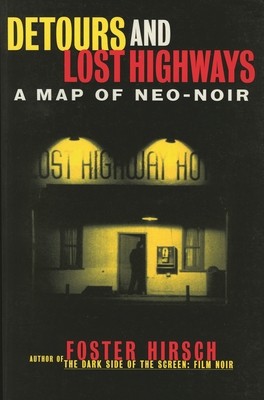
- We will send in 10–14 business days.
- Author: Foster Hirsch
- Publisher: Limelight
- Year: 1999
- ISBN-10: 0879102888
- ISBN-13: 9780879102883
- Format: 15.2 x 22.9 x 2.5 cm, minkšti viršeliai
- Language: English
- SAVE -10% with code: EXTRA
Reviews
Description
"Detours and Lost Highways begins with the Orson Welles film, Touch of Evil (1958), which featured Welles both behind and in front of the camera. That movie is often cited as the end of the line, noir's rococo tombstone...the film after which noir could no longer be made, or at least could no longer be made in the same way... It is my belief, Hirsch writes, that neo-noir does exist and that noir is entitled to full generic status. Over the past forty years, since noir's often-claimed expiration, it has flourished under various labels. Among the movies he discusses as evidence: Chinatown (1974), Body Heat (1981), John Woo's Hong Kong blood-ballets (e.g., The Killer, 1989) and the pulpy oeuvre of Quentin Tarantino." - Washington Post Book World
EXTRA 10 % discount with code: EXTRA
The promotion ends in 23d.10:07:50
The discount code is valid when purchasing from 10 €. Discounts do not stack.
- Author: Foster Hirsch
- Publisher: Limelight
- Year: 1999
- ISBN-10: 0879102888
- ISBN-13: 9780879102883
- Format: 15.2 x 22.9 x 2.5 cm, minkšti viršeliai
- Language: English English
"Detours and Lost Highways begins with the Orson Welles film, Touch of Evil (1958), which featured Welles both behind and in front of the camera. That movie is often cited as the end of the line, noir's rococo tombstone...the film after which noir could no longer be made, or at least could no longer be made in the same way... It is my belief, Hirsch writes, that neo-noir does exist and that noir is entitled to full generic status. Over the past forty years, since noir's often-claimed expiration, it has flourished under various labels. Among the movies he discusses as evidence: Chinatown (1974), Body Heat (1981), John Woo's Hong Kong blood-ballets (e.g., The Killer, 1989) and the pulpy oeuvre of Quentin Tarantino." - Washington Post Book World


Reviews